Best And Worst Greek Myths On Screen
With Wrath Of The Titans shortly to be unleashed in cinemas, Jayne Nelson takes a look at some of the best – and worst – examples of Greek mythology to hit both small and big screens...
With Wrath Of The Titans shortly to be unleashed in cinemas, Jayne Nelson takes a look at some of the best – and worst – examples of Greek mythology to hit both small and big screens...
Clash Of The Titans (1981) Clash Of The Titans (2010)
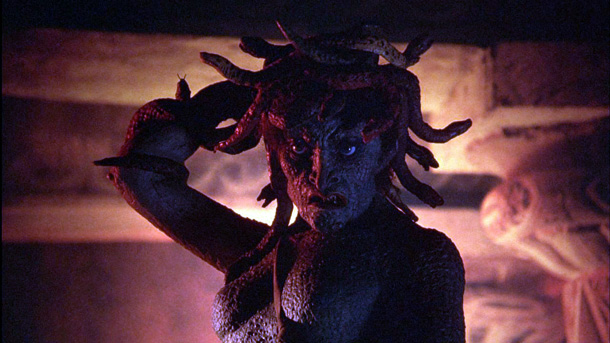
Giant scorpions! Pegasus! The Kraken! Andromeda in the nuddy! Anybody who was a fan of fantasy cinema in 1981 has fond memories of the original Clash Of The Titans , and generations since have come to love its stop-motion charms (not that Andromeda in the nuddy was stop-motion, we hasten to add).
Although some of the FX haven’t aged as well as they could have done – particularly the giant scorpion fight, the filming of which was hampered by bad weather, making it look dark and dingy – the ’80s Titans still has an ace up its sleeve: Medusa. For kids of the era she was a monster as terrifying as anything CGI can conjure today, dragging her giant snake body around by her hands, rattling her rattlesnake tail, her hair hissing and pulsating... The work that went into her is astonishing: every time Ray Harryhausen filmed a frame he had to move every one of the 12 snakes on her head (24 movements, heads and tails) as well as the rest of her. The sequence is still chilling 30 years on.
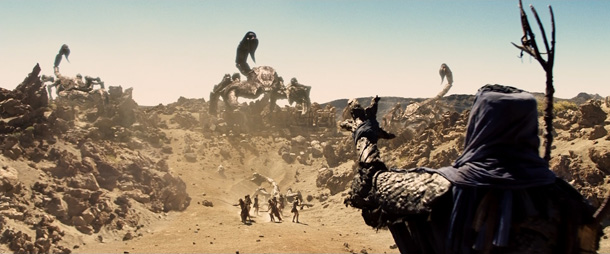
As for the remake, however... well, we’ll allow the fact that the scorpions look better in CGI, the Kraken is pretty cool, and Liam Neeson yelling “Release the Kraken!” is pretty damn iconic right there. But something’s been lost in translation; the original Clash revelled in the chance to bring Greek myths and monsters to life, while the remake seems to be screaming, “We’ve spent a ton of money on this, flock to your local cinema to pay us back!” Or perhaps we’re being churlish.
Either way, check out this handy mash-up between the old Medusa and the new one . Which is your favourite?
Percy Jackson And The Lightning Thief (2010)
Weekly digests, tales from the communities you love, and more
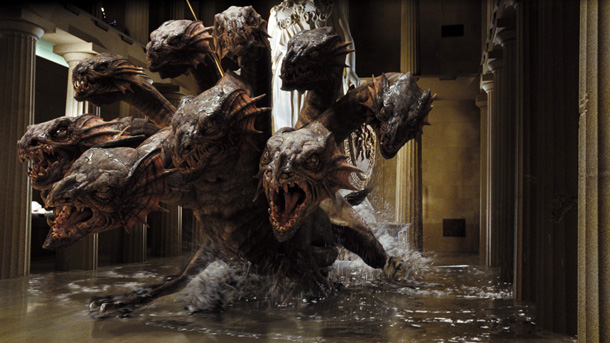
The popular Percy Jackson book series by Rick Riordan does its damnedest to teach modern children the joys of all things ancient and Greek by updating the myths and legends to the present day. For which we say, “Well done!” Sure, there are quibbles here and there as the odd myth is fiddled with, but for sheer energy and enthusiasm they can’t really be beaten.
The first film (the sequel, Percy Jackson And The Sea Of Monsters , comes out in March next year) has young Percy (Logan Lerman) discovering he’s the son of Poseidon. Before he can say “Bzuh?” he’s accused of stealing Zeus’s lightning bolts and off he goes on a quest to recover them – a quest that takes him everywhere from Las Vegas (in which there’s a very clever play on the Lotus-Eaters) to Hades, ruled by none other than Steve Coogan in rock-star mode.
It’s all fairly standard adventuring that’s lifted by two great scenes: a fire-spewing Hydra and Uma Thurman’s slinky, sexy Medusa. “Son of Poseidon? I used to date your daddy,” she drawls in a smoky voice – a far cry from Titans’ tail-wagging serpent.
Hercules: The Legendary Journeys (1995–1999)
Xena: Warrior Princess (1995–2001)
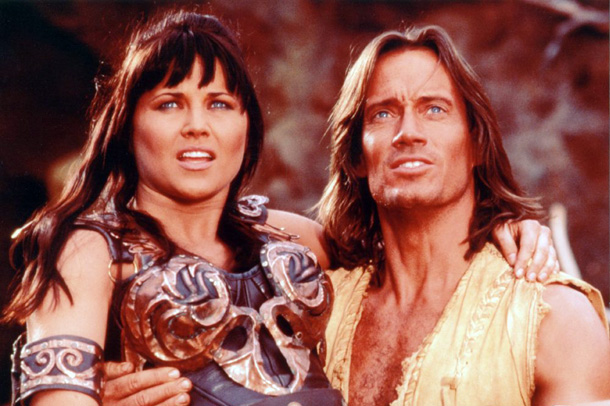
A lot of Greek myths are downright unsettling. First there’s all that nasty incest going on between the Gods; Zeus really got around, the naughty chap. Then there are the times Gods force themselves on ladies by appearing to them as showers of gold or eagles. And then there’s the fact that not all the myths really resonate today – one of Hercules’ 12 tasks, for instance, was to muck out a stable. Okay, it was a big stable, but still... it’s hardly fighting a dragon, is it?
What the makers of Hercules and Xena did was rewrite these myths in child-friendly ways, turning the epic battles of the Gods of Olympus into excuses for a WWE-style rumble in the jungle with either a bare-chested muscleman (Kevin Sorbo) or a leather-wearing Amazonian (Lucy Lawless). Hercules tended to focus on the more comedic aspects of the myths – his encounters with the Clueless -style Aphrodite, for instance – while Xena usually opted for a more gritty tone, incorporating Roman and even Christian elements to her adventures.
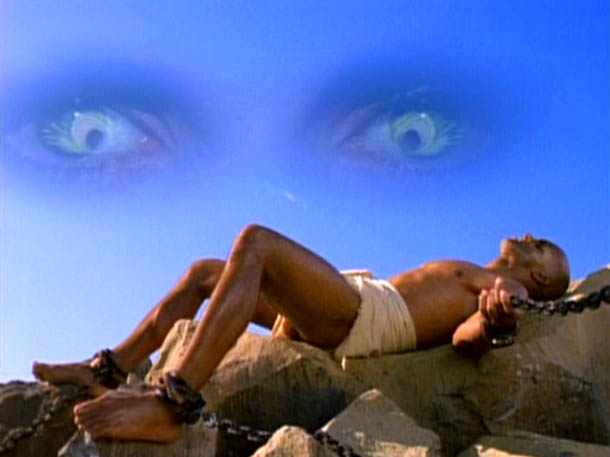
Probably the best example of Greek myth-making came in the Xena episode “Prometheus”, in which she and Gabrielle teamed up with Hercules and Iolaus to restore fire to the world. The episode featured a giant version of the fire-stealing Prometheus chained to a rock, plus the eagle who would fly in and eat his liver every day (only for it to grow back, so he could suffer again the next day). The FX were pretty ropey but it was a clever way of bringing an old myth to a new audience.
Xanadu (1980)
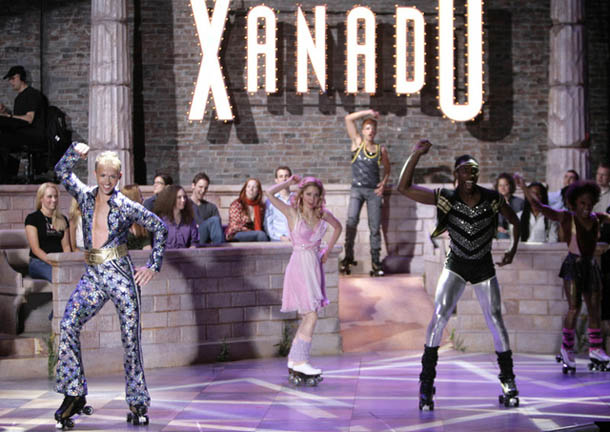
In 1947 Rita Hayworth starred in a jolly musical called Down To Earth in which the red-headed Hollywood bombshell played the Muse Terpsichore (one of the nine Muses, her speciality being dancing and chorus). Annoyed to discover that a Broadway musical is being staged which portrays her and her sisters in a bad light, she decides to come down to Earth and change the production as much as she can – falling in love with the producer in the process.
Move on a few decades and Down To Earth was used as inspiration for another musical, this time the Olivia Newton-John-starring Xanadu (“…ooooo-wooooo… ooooo-woooo!”) The Aussie singer, still riding high from Grease a few years before, stars as a Muse who finds herself falling in love with a human. Meanwhile everybody else zips about on roller-skates for no other reason than the fact roller-skates were cool in 1980.
Savaged by the critics, Xanadu failed at the box-office but has become a camp cult hit over the years, with more people remembering it than the 1947 musical that inspired it. It’s also notable for being Gene Kelly’s final film, fact fans.
Here’s the trailer, but be warned if you suffer from epilepsy: it contains more flashing lights than the underside of the UFO in Close Encounters ...
Jason And The Argonauts (1963)
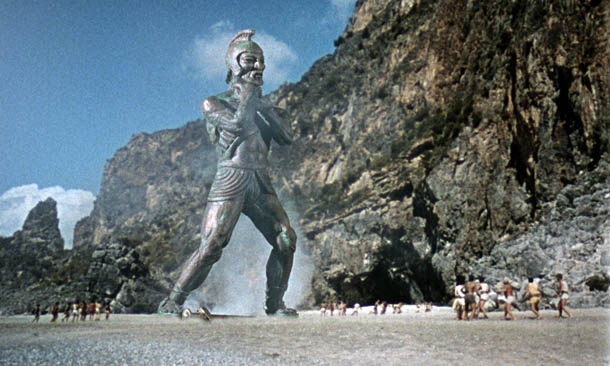
What can we say about this wonderful fantasy that hasn’t already been said? If we focus on the negative we can point out that it doesn’t really have an ending (there was supposed to be a sequel, which never happened) and Todd Armstrong doesn’t make much of an impact as Jason... but who cares? It’s Ray Harryhausen’s FX that we tune in for, and they’re about as good as classic cinema gets.
It’s the definitive version of the Argonaut tale, albeit unfinished and with a few embellishments. The giant bronze Talos, the Hydra, an army of skeletons, Triton kindly holding back two cliffs so that the Argonauts can sail under his armpit... classic scenes every one. Our love for this film knows no bounds, so much so that whenever we hear rumours of a remake we want to unleash a pack of flying Harpies at the people responsible. A long-gestating sequel, however – Jason And The Argonauts: The Kingdom Of Hades – might well be an interesting addition to Jason’s journey. We can only hope.
O Brother, Where Art Thou? (2000)
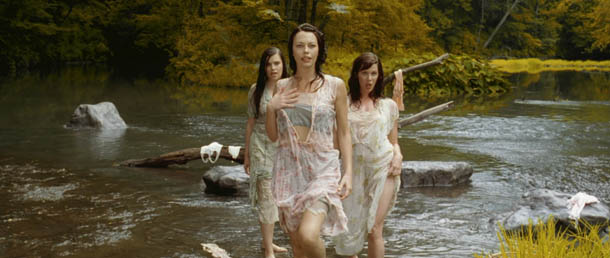
Not a film you’d expect to see on a list from SFX , true, but we have our reasons. As many of you no doubt already know, the Coen Brothers’ quirky O Brother, Where Art Thou? is loosely based on Homer’s The Odyssey , making it the most mainstream and sneaky adaptation of any Greek myth to date (mainly because the majority of people who’ve seen it don’t have a clue).
Nods to The Odyssey range from the obvious (George Clooney’s lead character is named Ulysses, a variant of the name Odysseus) to the slightly more subtle (another character is named Menelaus, who was an evil king in the original story). John Goodman plays the Cyclops – in this case, a one-eyed Bible salesman – and there are appearances from everything from the Lotus-Eaters to the Sirens (check out the clip below).
What tips this film into SFX territory – as if the Sirens haven’t already – is the blind prophet who appears to our three heroes at the start of the film, spookily predicting all of the events that happen to them during the course of the story. If Clooney had spent the entire film in sandals and a toga it couldn’t have been more fitting.
Immortals (2011)
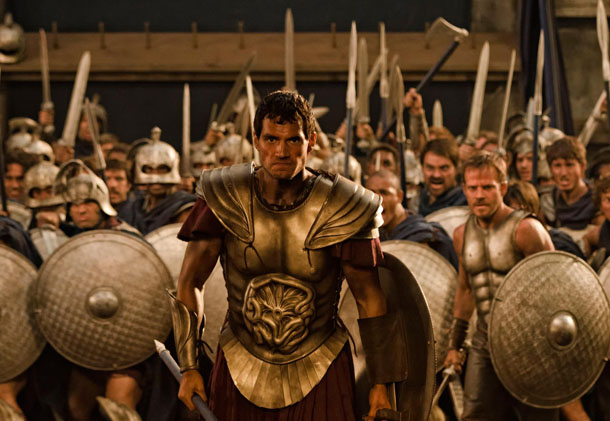
In 2006, 300 proved that you can get away with throwing a group of well-muscled, half-naked men together in a film that’s more style than substance, just as long as there’s a halfway decent story to hold things together.
In 2011, Immortals proved that 300 was a one-off fluke.
Helmed by Tarsem Singh, a director famed for putting set and costume design above story (not always to the detriment of the film – The Fall was rather good), Immortals tells the legend of Theseus but gets so caught up in the blood, violence and look of everything that you end up not giving a damn about who wins or loses, merely when the whole thing will end. Quite why the Titans are trapped in a giant football table, or why the Gods look like the cast of the stage version of the Lion King is never explained.
Quite how you can mess up a set piece as iconic as Theseus and the Minotaur is a mystery to us, but it happens here – and we can’t even say it’s a load of old bull, as this Minotaur is about as bullish as a hedgehog. The stars of this film may be immortal, but the film itself certainly won’t be. Next!
Hercules (1997)
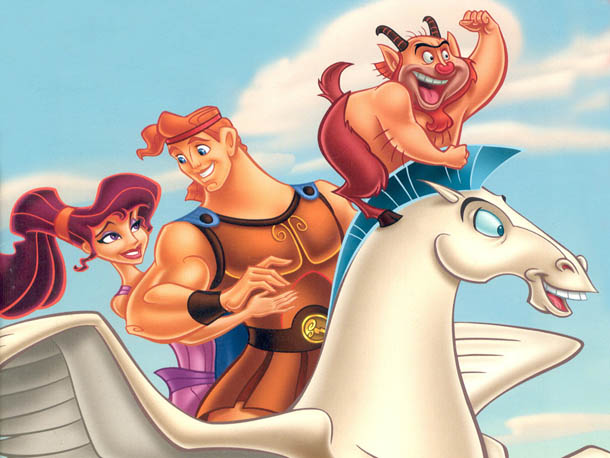
Released at the height of the Hercules/Xena phenomenon (although obviously Disney had been working on it since before the shows were hits), the story of Hercules may have seemed like a dead-cert for the House of Mouse but the film didn’t do half as well at the box-office as you’d expect. These days it’s nowhere near as fondly remembered as other Disney titles of the time, with a largely forgettable soundtrack and characters whose design didn’t translate well to plush toys.
It’s still good fun, however, with a jaunty, colourful style that takes advantage of classical Greece even if it takes liberties with the legends; indeed, the Greek government wasn’t impressed with the film’s offhand manner, denying the studio’s request to have the premiere in their country. Best of all is James Woods having a gay old time as Hades – flaming hair and all.
But we do have to wonder... If you’re going to make a film about Hercules, wouldn’t it have been better to actually show his Labours, the thing he’s most famous for? Why make up an original story when there’s already a story there? (Minus the bit where he cleans out the stables, of course.) Still, too late now...
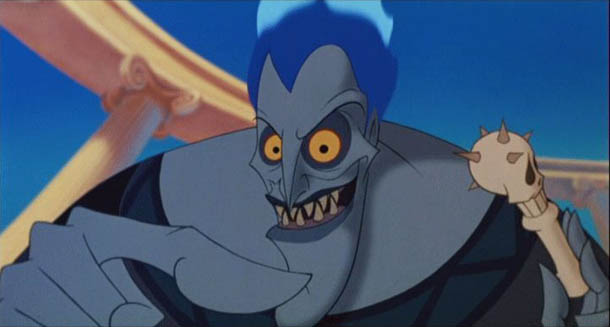
The Storyteller: Greek Myths (1990)
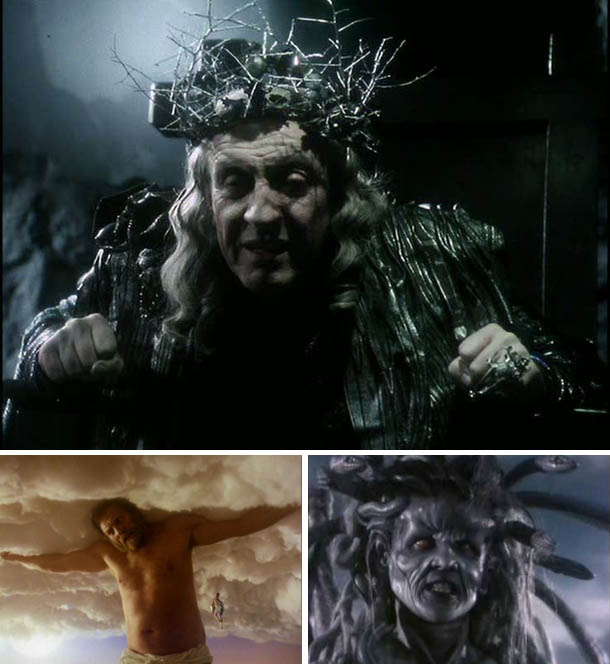
Hot on the heels of John Hurt telling fairytales so brilliantly in The Storyteller came this spin-off Jim Henson series, this time starring Michael Gambon. It’s too short to have pinged most peoples’ radars – sadly comprising only four episodes – but each story is handled with intelligence, many of them far more sombre in tone than you’d expect for what is ostensibly a children’s series. They also refuse to gloss over some of some of the myths’ weirdest elements (Zeus appearing as a shower of gold to impregnate the mother of Theseus, for instance).
The stories are told by a man (Gambon), who is lost in a labyrinth, to his talking dog (Brian Henson), and they take in Perseus and Medusa, Icarus and Daedalus, Theseus and the Minotaur and Orpheus and Eurydice (don’t look back! ...whoops, too late). You can pick up the DVD collection online but it’s pretty rare and fairly pricey; a sign of its quality.
More Mythical TV
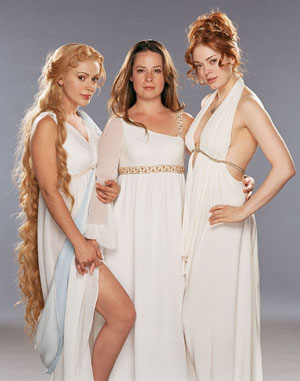
Probably the best-loved Greek myth translated to telly – for kids, anyway – is the series Ulysses 31 , which brought The Odyssey to the stars, sending Ulysses into space in the 31st century on a quest. If nothing else, children came away from this show with two things: the knowledge that the gods of Olympus were a bunch of gits, and a theme song they could never get out of their heads...
And finally, of course, we have to mention Doctor Who , which has had a lot of fun with Greek myths over the years. There was a partly stop-motion Medusa in the 1968 Patrick Troughton story “The Mind Robber”, beating Harryhausen’s version by 13 years, but not looking quite so good…
In 1972 Jon Pertwee’s Doctor discovered that the Minotaur (played by David “Darth Vader” Prowse) had relocated from Crete to ancient Atlantis, and taken his maze with him.
Tom Baker’s “Underworld” (1978) was basically Jason And The Argonauts in space which sounds cool, except most of the story was set in a dingy cave system. A season later, the production team pulled off a similar trick with “The Horns Of Nimon”, which was a thinly-disguised sci-fi version of the Minotaur myth. A distant relative of the Nimon turned up in 2011’s Matt Smith story “The God Complex”, in which the maze had become a holodeck hotel. It’s surprising Who hasn’t done more with Greek myths, actually – but there’s still time for the Doctor to fight a Hydra or clean out some stables.

Dave is a TV and film journalist who specializes in the science fiction and fantasy genres. He's written books about film posters and post-apocalypses, alongside writing for SFX Magazine for many years.


